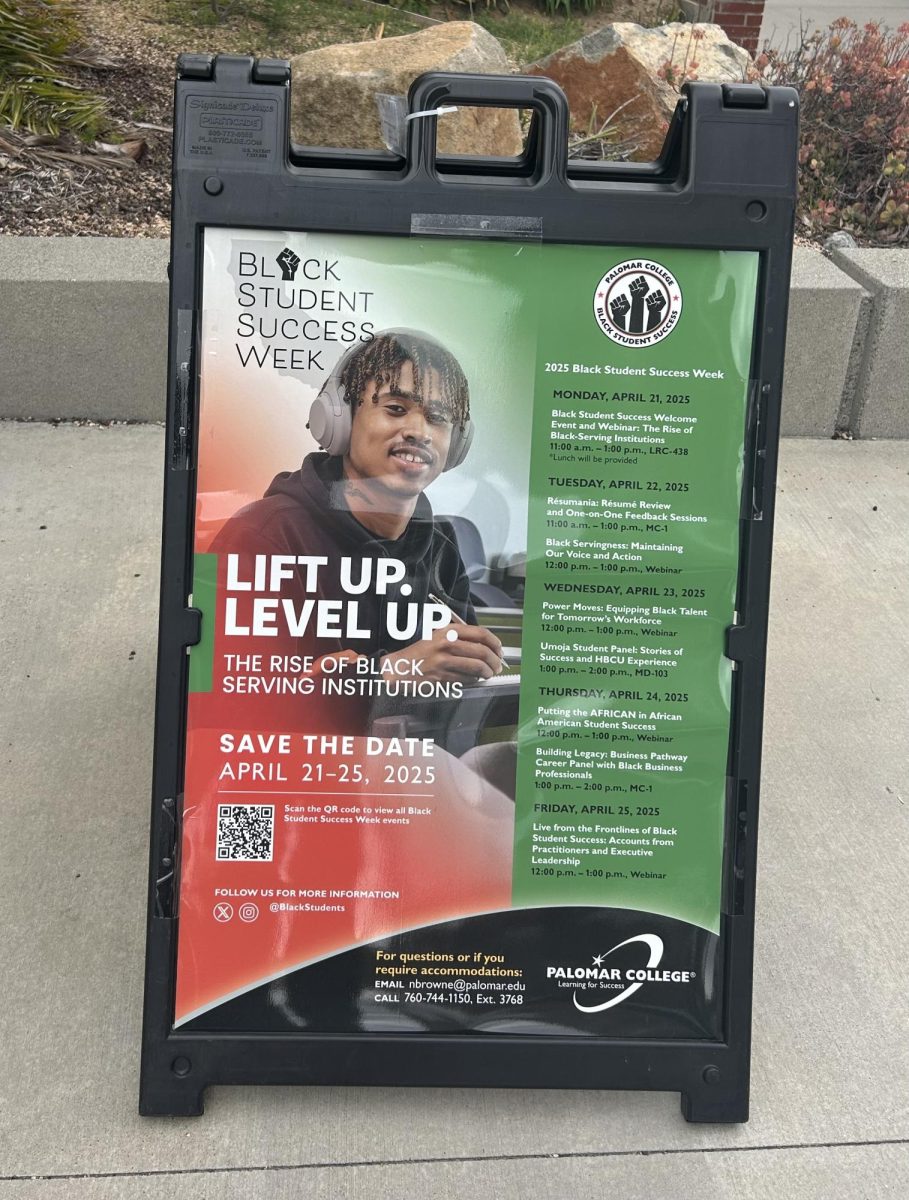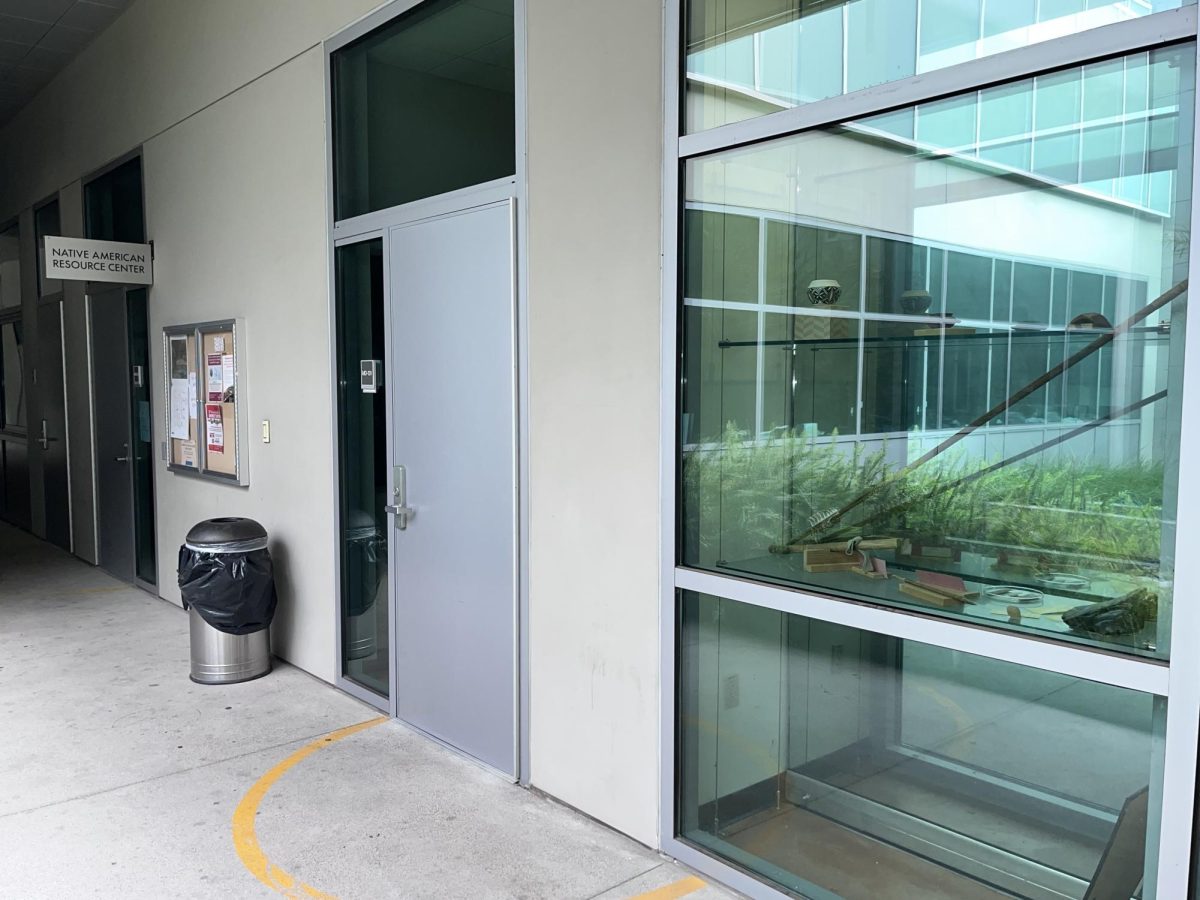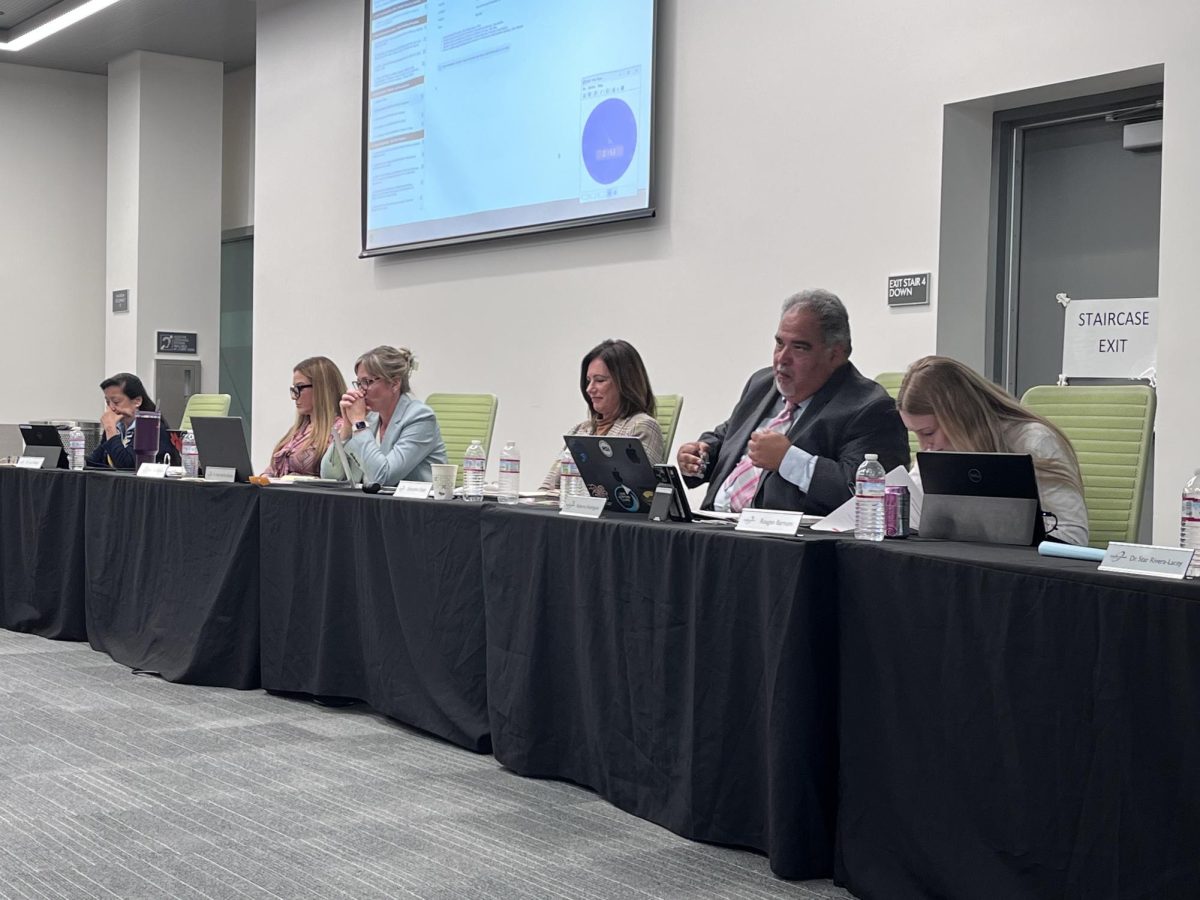What, when, and how to cut classes due to enrollment numbers has sparked concern among faculty.
This semester classes are being cut earlier than past years and in some cases before the semester begins due to low enrollment numbers.
Faculty Union member Shannon Lienhart has been looking at the numbers of classes that have been cut and examining whether these classes would have made the necessary enrollment number of 20 students if they weren’t cut a week before the start of the semester.
Lienhart estimates that there are about 180 classes that have been cut.
She attributed the administration’s reasoning behind many of these cuts due to efficiency models to require more students per classroom.
“When you do short-term cuts right before the beginning of a semester you create a lot of chaos in people’s lives because they’ve planned their schedules around a particular class,” Lienhart said. “That’s what we’re protesting, essentially.”
She found this problematic because it often leads to students not having enough units for financial aid or not being able to graduate because they didn’t get into a specific class due to the sensitivity in their schedules. This sets up barriers for being a student at Palomar that she claims disincentivizes students to come to Palomar.
“I don’t believe that the district saves any money when they cancel a class that has more than 11 students in it,” Lienhart said.
For faculty she described the impact as wasting several hours of pre-semester planning for a class that ends up being canceled.
“They’ve done work that’s completely uncompensated and that becomes a problem,” Lienhart said.
Travis Ritt, Faculty Senate president, described class cuts as causing students to attend a different community college.
“Community colleges are open access. You put in your application and you can start taking classes. So students might, and good for them, go to MiraCosta,” Ritt said. “We are losing those students, they say, ‘Hey I can take my full schedule and go somewhere else’ and so they just go elsewhere.”
Though Ritt disagrees with looking at the college as a business model, Palomar is funded through its number of full-time equivalent students. Because of this if there’s obstacles such as class cuts getting in the way of students taking needed classes then Palomar as a college receives less funding and there is a further impact on what classes the college can offer in the future.
Daniel Sourbeer, interim Vice President of instruction, described class cuts, enrollment and efficiently filled classes as a balancing act of revenues and expenses. This is partly due to enrollment numbers, which he describes as being on a statewide decline that is currently balancing out.
“I think we’re going to stabilize this year and maybe grow a little,” Sourbeer said.
He also explained that while we want to grow into more efficient class sizes, he wants to make sure Palomar is still serving students needs with comprehensive programs. This would start with scheduling from the department chairs and deans to design schedules that account for student success
The college has broken the departments into three tiers for which classes are cut and how the college will grow. Sourbeer also went into protecting sequence classes and critical electives for transfer security.
He claims that Palomar has cut half as many classes as we did last fall and made efforts to establish more Fast Track programs where classes are offered for half the semester. Along with this, the college web page has included a search bar for finding open classes.
Ritt explained that when economy is in recession a few years ago, more people enroll in community college to increase their job skills, and Palomar professors were having to turn away students since their class were at cap
“We got very used to this idea of no matter what we are going to meet on that first day of class and students are going to be able to say, ‘Hey, I really like this class’ and professors can make the plea to let their friends know about the class,” Ritt said.
Because of this supply of students looking for career advancement, both students and faculty were able to get the class they need, with little financial hit taken by the college for keeping classes with low enrollment.
“If there’s a thousand classes like that, then that can be problematic. If there’s a couple dozen, you know, it’s not really going to be an issue,” Ritt said.
He described a long held belief that how many students you see on the first week of class often is less than what you see on the second. This is because other classes get canceled and students are still signing up and enrolling for classes.
“From my time at Palomar, I don’t think I’ve ever seen a class enrollment go down from day one to day two. They’ve always gone up.” Ritt said. “By canceling early we’re taking away the chance for those classes to be viable.”
Lienhart claims that as long as the class has 10 students the school breaks open on keeping the class around, even though the college’s minimum enrollment number is 20 students. Also once the class exceeds 10 students it more than pays for the cost of the class, she said.
“So the district is not really losing any money on a class that only has 12 or 13 students in it,” Lienhart said.
Lienhart said that in past years when the college was trying to boost numbers of full time equivalent students Palomar would allow classes with fewer students in them to be in session, since it would bring students into the college.
Leinhart explained that the college saves about $500 if they cancel a class and she’s contesting that 40 class should have been left open, that would equate to $20,000 in total saved revenue. She claims that for this cost the administration is willing to have an adverse effect on 400-500 students and 30-40 faculty members.
“Is that amount of money in the big scheme of things worth all of the trouble?” Leinart said.
Sourbeer describe enrollment in a class as having to pay for more than just the class itself, it has to pay for the rest of the college as well.
“To me it’s not really a legitimate analogy, you’re not just paying for a class you’re paying the college.” Sourbeer said in response to 10 being the number of students required to pay for a class.
Ritt describes that from the part-time faculty perspective, class cuts are detrimental. This is due to if one class possibly being a large chunk of a part time faculty member’s income.
“If it’s canceled at the last minute; they can’t get a job somewhere else and they lose that income,” Ritt said. “When there’s 15, 16, 17 (students) and it’s (canceled) right before the semester starts, it just doesn’t make any sense. It hurts our image.”
Sourbeer described the reasoning for cutting classes earlier so that students have an opportunity to get into another class.
“Ideally we try to cancel further out so that students have time to find a class to get into,” Sourbeer said. “I would prefer to be cutting earlier rather than after classes start, so that there isn’t a real scramble.”
He also acknowledges that there is a human cost to cutting classes for students and faculty.
“I was young and I specifically remember those kinds of problems of you know trying to scramble and get your class at the last minute,” Sourbeer said. “I’m 36 years into this career and I taught until the last six. I’ve been there, I’ve been that person who had have that call and had it cut.”
On the idea that once one class is canceled people funnel into another, low-enrolled class, Ritt explained that more often or not once the dust has settled the classes that are still available are full.
“We’re not obligated to take them (more students), but we’re educators. So if somebody is knocking at our door and saying, ‘Please this will benefit my education.’ Of course we’re going to let them in and what that means in the long run is that we’re not getting paid anything extra. It’s not about the pay, but there is more work that is expended,” Ritt said.
Because of this those class that are full are getting even fuller. Ritt explained this detrimental to the students education and the professor’s workload.
“The onus shouldn’t be on other students to find other students to take classes so that they can get their education. I mean that’s just wrong,” Ritt said.
Lienhart argues that long range planning is more effective than short term cuts and in order to have long range planning you need to have data from how many seats are filled in a class after the semester starts.
“If you cut a class that has 15 students in it the week before school starts, you don’t know how many students would have enrolled in that class,” Lienhart said.
Sourbeer also expressed a need to revisit the requirement of 20 students to consider a class viable.
“Twenty is a number in our contract for if a instructors are able to teach a class or not, but we let a lot of classes under 20 go,” Sourbeer said. “If every class was at 20 we couldn’t run the college at that.”
He pointed to 441 classes with under 20 students that have been kept around for their importance to a specific major despite their costs.







